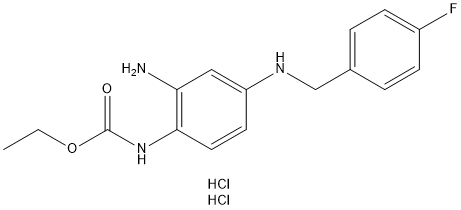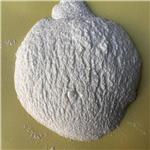Chemical Properties
Off-White Powder
Drug interactions
A clinical interaction study showed that there was no pharmacokinetic interaction between phenobarbitone and retigabine in healthy subjects. Thus, no dosage adjustment is likely to be necessary when phenobarbitone and retigabine are coadministered to patients
Uses
A new experimental anticonvulsant drug. Anxiolytic.
Retigabine Dihydrochloride (0.1 ~ 10 μM) induced a potassium current and hyperpolarized CHO-KCNQ2/Q3 cells but not in wild-type cells. In the 6-Hz psychomotor seizure model, Retigabine Dihydrochloride dose-dependently blocked seizures induced by either 32 or 44 mA current stimulation.
Biological Activity
Retigabine is a first-in-class k+ channel (kcnq) opener. kcnq channels are reported to be expressed predominantly in neurons and are critical determinants of cellular excitability, as shown by the occurrence of human genetic mutations in kcnq channels which underlie inheritable disorders including the syndrome of benign familial neonatal convulsions.
in vitro
retigabine was found to combine a novel mode of actions, which were namely potassium channel opening (kcnq2, kcnq3 as well as kcnq4 channels). retigabine also showed activities with some potentiation of gamma amino butyric acid (gaba)-evoked currents at its higher concentrations [1].
in vivo
animal models of epileptic seizures showed that retigabine treatment was effective at an oral dose as low as 0.01 mg/kg. studies performed in mice also indicated that combining retigabine with another anticonvulsant agent leads to an additive effect [1].
References
[1] ferron gm,patat a,parks v,rolan p,troy sm. lack of pharmacokinetic interaction between retigabine and phenobarbitone at steady-state in healthy subjects. br j clin pharmacol.2003 jul;56(1):39-45.



